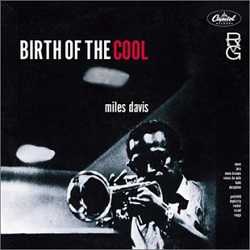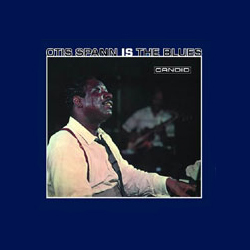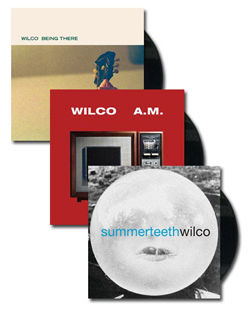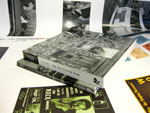Miles Davis “Birth of the Cool” Capitol Records/Classic Records
- Performance:

- Sound:


I came to Miles Davis’s “Birth of the Cool” with expectations. Expectations which were shattered more or less as soon as the needle hit the groove. It didn’t take me long to realize the error of my ways, and it’s a mistake I’ve vowed not to revisit. You can bring your expectations to a Tom Petty record maybe. In that case, you’d be justified to anticipate smart lyrics with infectious melodies by a group of seasoned rock and roll pros playing their updated version of the music that inspired them growing up in the ’60’s and ’70’s, right? Sounds reasonable, I think. But to bring pre-conceived notions to a Miles Davis record is like trying to predict where a hurricane is going to touch land or when the next great San Francisco earthquake is going to hit. No need to get too caught up with your own forecasts and calculations. It’s going to hit you where it hits you. Might as well settle in and enjoy the ride. Wherever it takes you…
I think the title through me. That and the album cover. I mean, we’re looking at a photo of Miles Davis playing his trumpet in what I imagine to be a recording studio (more assumptions…) wearing sunglasses on a record called “Birth of the Cool.” I’ll forgive myself somewhat for expecting a laid back affair conjuring visions of hip cats in dark evening wear sitting in a jazz club nodding their heads almost imperceptibly while their lady friends sit quietly by tapping the same fingers that hold their slim cigarettes near the ashtray on the table. “Another Manhattan, my man, and whatever she’s having.” What I got conjures images of a more well lit party, still with fancy drinks, but with greater merriment and brighter clothing and probably in a fancy apartment in New York City. I was expecting something more in line with Davis’s “Kind of Blue,” which I consider one of the “coolest” recordings. Ever. (I’m not a jazz historian and didn’t realize that the sessions that produced the two records took place about a decade apart. That’s an eternity for a talent like Davis, especially considering his propensity toward exploration.) What I got was a record that sounds to me like it was influenced quite heavily by big-band jazz, and would be quite easy to dance to if I knew how to dance. (If I had ham, I could have ham and eggs if I had eggs.)
I’m leaving myself wide open to attack by critics more knowledgeable about jazz, I realize. The write-up on the back cover says that the record was inspired by classical music. I hear big-band swing. So it is. All of the songs feature at least eight players, usually nine. In my mind, that’s a “big band.” This is a generally up-tempo recording with the notable exception of “Moon Dreams,” which was co-written by Savannah, Georgia’s own Johnny Mercer. Other than that, it sounds like a swinging good time to me. All I’m saying is that I don’t consider the music on “Birth of the Cool” to be that radical a departure from other forms of the genre. My novice ear still hears traces of bebop but with tighter arrangements and shorter solos. Call me crazy, throw eggs or knives. Do what thou wilt.
Here’s the really important thing about “Birth of the Cool,” as I see it: It’s phenomenally wonderful. I enjoy it much more as an active than a passive listen. It’s okay to do the dishes while you’re listening to “Birth of the Cool,” but I’d rather position myself perfectly in my apartment for the best sonic experience possible, shut my eyes, and meditate on it for the duration of each amazing side. It doesn’t hurt that my copy is a Classic Records re-issue on 200-gram vinyl in mono. I’ve expounded about this company’s work a lot in recent posts, and I apologize for sounding like a broken record (heh, heh). But you wouldn’t criticize a boxer for fighting in a style that affords him the best shot at a knockout. I’m just going with what I know will work for me. The real magic, clearly, is in the music. The Classic Records version just makes it easy to hear that magic in a very pure, unadulterated form. I can excuse myself for being blind-sided by the content of the record or for bringing my own pre-conceived notions to this party. The real issue is that I should have familiarized myself with this one years ago. I should have known all along.
Otis Spann “Otis Spann Is The Blues” Candid/Pure Pleasure Records
- Performance:

- Sound:


Otis Spann isn’t a household name, but he’s at least a household sound to serious blues fans. Spann played piano on many of Muddy Waters’ most famous songs starting around 1952. JoJo Hermann, keyboardist for Georgia’s Widespread Panic band, turned me onto him when I was but a wee lad. I didn’t realize at the time what a huge favor he’d done for me. I got around to picking up a couple of Spann’s records a few years later and was appropriately astonished by the quality of his work. The records themselves, however, left much to be desired. I could’ve replaced them with CD’s, but who wants CD’s, really? I’d rather deal with some pops and hisses as long as the spirit of the original recording wasn’t obscured. It wasn’t. But it had to fight to get through. You can imagine my excitement at realizing that Pure Pleasure Records had released some of Spann’s catalogue on their boutique label. “Otis Spann Is The Blues” is a collaboration with Robert Lockwood Jr. and the spirit on this one is obscured by exactly nothing.
Neither of these artists are accomplished vocalists, especially compared to their more famous band mates and mentors. Spann didn’t record “Is The Blues,” his first solo offering, until 1960. He’d had plenty of time by then to soak up the power of Muddy Waters. Lockwood was the stepson of one of the most recognizable and legendary names in blues history. The “Jr.” in his name was due to his affiliation with Robert Johnson. Can you imagine being a young blues enthusiast whose mother had the bad fortune of shacking up, off and on, with Robert Johnson over the course of ten years? The influence isn’t very obvious on this recording in particular (perhaps because Lockwood’s guitar is electric), but the quality of the musicianship is. And no one will be fool enough to debate the quality of Spann’s piano playing with me. I might take some flack for my lack of jazz knowledge (see this month’s review of “Birth of the Cool”), but I know real blues when I hear it. This is it. The ability of both players is accentuated by their being the only players on the album. And I can’t imagine that we’re dealing with many overdubs here either. This is the sound of two men playing the only music and living the only lifestyle that they knew. (Spann died of liver cancer at the age of 40.)
Spann basically handles all responsibilities that would normally befall a rhythm section as well as some lead work while Lockwood handles the accents and atmospherics. That’s my generalized take on it anyway. (I mean, Lockwood’s not exactly hurting for rhythmic timing either.) And I didn’t mean to suggest that these guys can’t sing. I’m merely suggesting that the vocals aren’t the main draw here. No one’s embarrassing themselves at singing time (the two players share this duty more or less evenly), but their playing is world class. Especially Spann’s on “Is The Blues.” It is his record, after all. We could get into specific songs in this dialogue, but you probably get the picture if you’ve ever listened to the true Blues Masters. These are songs about drinking, and women, and working, and struggling, and celebrating. To me, those are all very often the same thing. I’d like to think that Otis Spann would agree. Spann’s two piano solos (“Otis In The Dark” and “Great Northern Stomp”) are amongst my favorites on this set as they have served as my first opportunity to hear this genius play in a setting unmolested by others’ contributions. Lockwood’s version of his stepdad’s “I Got Rambling On My Mind” is a standout too. Really, you could play any song here and it would stand on its own. Taken as a complete work, “Otis Spann Is The Blues” is one of the finest examples of traditional blues music that I’ve ever heard.
The most impressive quality of the vinyl here is that you’d have no way of knowing that you were listening to vinyl if you weren’t actively looking for the occasional tick or pop. I cleaned the record once on my Nitty Gritty cleaning machine just to remove the dust that always attends the unveiling of a new record, and that’s all it took. This one’s as clear and clean as any record I own. I can’t imagine that the original tapes were too challenging to work with from a mixing standpoint. There’s not a lot of instrumentation to cloud the sound after all. And I can’t imagine finding an original copy that sounds any better or how much it would cost if you did. As it stands, this record will run you about $30 new. You might as well pay it because no one’s going to take this one to their used record shop and you’re going to spend $30 on something sillier sometime soon anyhow. This one’s going into heavy rotation and I’ve already pulled out my Muddy Waters Chess recordings box set too. The Blues are designed to make you feel better for having heard them. Let the healing begin…
Wilco “A.M.” Nonesuch
- Performance:

- Sound:

Wilco “Being There” Nonesuch
- Performance:

- Sound:

Wilco “Summerteeth” Nonesuch
- Performance:

- Sound:


I was just a little late to the early ’90’s Uncle Tupelo party. They’d just broken up around the time that a college room mate turned me onto them. I was despondent to learn that I’d never get a chance to see them live and that I didn’t have any further output to anticipate from them. Luckily, I didn’t have to wait long until both songwriters unleashed the new bands that they’d cobbled together from the scrap heap that had become Uncle Tupelo. Jeff Tweedy’s band, Wilco, released their debut, “A.M.,” in 1995 and they’ve stayed gloriously busy ever since. Along the way, they’ve completely distanced themselves from the outfit they once were as well as their record label and some of their fans, and they’ve taken better care of the fans they’ve retained than any current band that I’m aware of. To that end, they’ve re-released their first three long players on high quality 180-gram vinyl, and I’ve never heard these recordings sound better. Not even close.
“A.M.” was a solid record. It was not a masterpiece. Those would come later. “A.M.” was sturdy enough to placate Tupelo fans, and to garner the band a 200 date tour in support of the release. Tupelo followers had come to expect straight forward country-rock which is a silly enough term on its own, and then folks started talking about “alterna-country.” Call it what you will, but Jeff Tweedy was on the front lines of its development and people wanted more of the same from Wilco. And that’s pretty much what they got on “A.M.” It’s an easy listen with little or no challenges for Tweedy’s devotees to that point. There were a couple of videos on MTV and I think they even made it onto “Beavis and Butt-head” with “Box Full Of Letters.” I have noticed that Wilco includes very little from “A.M.” in their current setlists for whatever that’s worth. I don’t want to speak for the man, but I would guess, at the very least, he might believe that those songs aren’t a fair representation of what the band does now.
1996’s “Being There” began the movement towards what the band does so well now. These songs are more cerebral with a greater variety of sounds and instrumentation. It feels deeper than “A.M.” somehow, and plenty of its offerings are displayed over the course of a current Wilco show on a nightly basis. Jay Bennett makes his first appearance as a band member on “Being There” and he’d serve as Tweedy’s musical foil for a couple more releases until their acrimonious split which was so well documented in the movie “I Am Trying To Break Your Heart.” (It’s too well documented if you ask me. I felt like I was watching a locker room fight or the dissolution of someone’s marriage. I thought it was a little classless and I don’t recommend it. Moving on…) I give it a spin every so often to this day, and I recognized it for what it was immediately upon it’s release. A killer album with great songs that was produced in such a way that you can listen to it repeatedly without thinking of anything other than the music.
I wasn’t as supportive of 1999’s “Summerteeth,” and I suspect that the folks at Reprise Records weren’t either. What had their darling little “alterna-country,” good time loving band become? I’m loathe to admit that I didn’t like it upon its release either because I can’t get enough of it now. How could you? I don’t throw the word “masterpiece” around at any old offering, but I feel like any other description comes up short. By then, the guys had moved on from “branching out” to full on “experimentation.” I wasn’t ready for it ten years ago, but this record (and “Being There” too) has held up better than I’d ever have imagined on first listen. Seeing Wilco perform “Via Chicago” live is one of my favorite things to do in the world. “A Shot In The Arm” still brings the house down too. I get the feeling that Bennett played a pivotal role in crafting this record, perhaps more so than on others. If that’s the case, I would submit “Summerteeth” as his most fitting epitaph as he passed away in his sleep earlier this year.
I saw “A.M.” for sale at a record store in Atlanta once about seven years ago. It was a red record in a clear vinyl outer sleeve and that was it. No real outer cover, no liner notes, nothing but the record. It was new and the store was asking $10 for it. I passed. I’ve owned the original version of “Being There” since its release. The vinyl was nothing special (except that it was vinyl) and both records were housed in a single outer sleeve which was ironic to me as the two discs in the CD version came in a gatefold. Go figure. By the time I saw the error of my ways regarding “Summerteeth,” I couldn’t find a copy online or anywhere else for less than $65. I’d have broken down and paid it eventually too. But that’s no longer an issue. All three of these reissues are packaged in more-rugged-than-normal outer gatefold jackets, even the single-disc “A.M.” All come with CD’s of their respective albums, and all of the records sound unbelievable. The quality of the vinyl is superb and these guys really spared no expense with this thing. Now, a Wilco fan can have the band’s complete collection of official releases in this format as all of their records that followed “Summerteeth” are still available on high quality vinyl. If you’re looking for an intro, I’d start with “Being There.” That’ll be enough to lure you in, and you can go any direction you want from there. Go nuts.
J. Geils Band “Live Full House” Audio Fidelity
- Performance:

- Sound:


The only thing I ever knew about the J. Geils Band was that they were from Boston, had two cheesy (but entertaining) hits in the woeful ’80’s, and that their lead guy was not named J. or Geils. The lead guy’s name was Peter Wolf and he was, by all accounts, a very accomplished rock and roll performer. He might still be, for all I know. I just couldn’t get those ’80’s videos out of my head long enough to give the band a chance, even though I’d heard for forever that they once were a smoking live blues-rock act. Fast forward a couple of decades, and I run across the J. Geils Band’s “Live Full House” record after having interviewed Steve Hoffman for this very website. Mr. Hoffman told me he’d mastered some J. Geils stuff for one of the high quality vinyl labels that pays for his expert services, and I clearly couldn’t pass up a chance to check out his work and the band in one swoop. I’ve learned a lot, but I still need more. I’ll tell you why.
First of all, the bulk of the J. Geils Band’s sound, at least on this recording, is built around Magic Dick’s exemplary harmonica work. (Mr. Dick’s real name is Richard Salwitz. I might have gone with Magic Johnson while it was still available, but nobody asked me.) Secondly, these guys obviously put on a high-energy rock show in 1972, but you might have had to be there to grasp just how rocking it was. The songs aren’t really the thing. Most blues songs aren’t. The feeling is the thing, and all I have to judge their stage show by is the live performance photos of the individual band members on the back cover. There’s Peter Wolf doing the flying air splits, and J. Geils himself on both knees playing a guitar solo with the full-on rock face and all. All six band members are exhibiting their own rock faces, in fact. It looks like it was quite a scene. The between song banter on “Full House” gives you a glimpse of the festivities, and the performance more than stands on its own as a professional rock presentation, but I suspect that you had to be there to really “get it.” That’s very often the case, but I imagine its especially necessary with this group. Lastly, these guys may not have quite had their thing entirely together in ’72. There are precious few originals on this one, and none of them sound a thing like “Centerfold.” Most of the songs are blues covers, if not standards. Otis Rush is represented with “Homework,” and John Lee Hooker is honored with “Serves You Right To Suffer.” The record starts with Smokey Robinson and Robert Rogers’ (also from the Miracles) “First I Look At The Purse.” This one’s probably the most memorable song on “Full House,” but not necessarily the most memorable performance. That award goes to “Whammer Jammer” which is basically a vehicle for a two minute harp solo by the aforementioned Magic Dick. The rest of the performance is fleshed out with the standard tricks for a blues revue. There are false stops, rave-ups and more general vamping to close out the set. I’d like to see some footage, if possible. It sounds like the Detroit crowd got their money’s worth, I’ll tell you that.
I’ll also tell you that the ever-gracious, polite, and witty Steve Hoffman did his part for the re-issue. Live rock recordings from the ’70’s can be a hit or miss thing. While this isn’t exactly “Live At The Fillmore East,” it’s more than just okay. I can’t imagine that the original sounded better than Hoffman’s version, but I’d like to compare the two to see just how much “magic” he was able to work with the source tapes. He told me during our conversation that you pay for what you get when you support the labels he works for. This one’s on the Audio Fidelity label, and the vinyl’s clean, the packaging is sturdy, and the surface noise is just not there. All of the instruments are super-clear in the mix even when Stephen Jo. Bladd gets a little too busy for my taste with the drums. I might not rush out and buy everything I can find with the J. Geils name attached to it, but I’ll probably do a little digging around on YouTube to see if my suspicions are correct about their stage show being the defining characteristic of the band. As is, I’ve got a pretty cool live document from a fun era for my favorite music. I’ll take that over being named Magic Dick any day.


